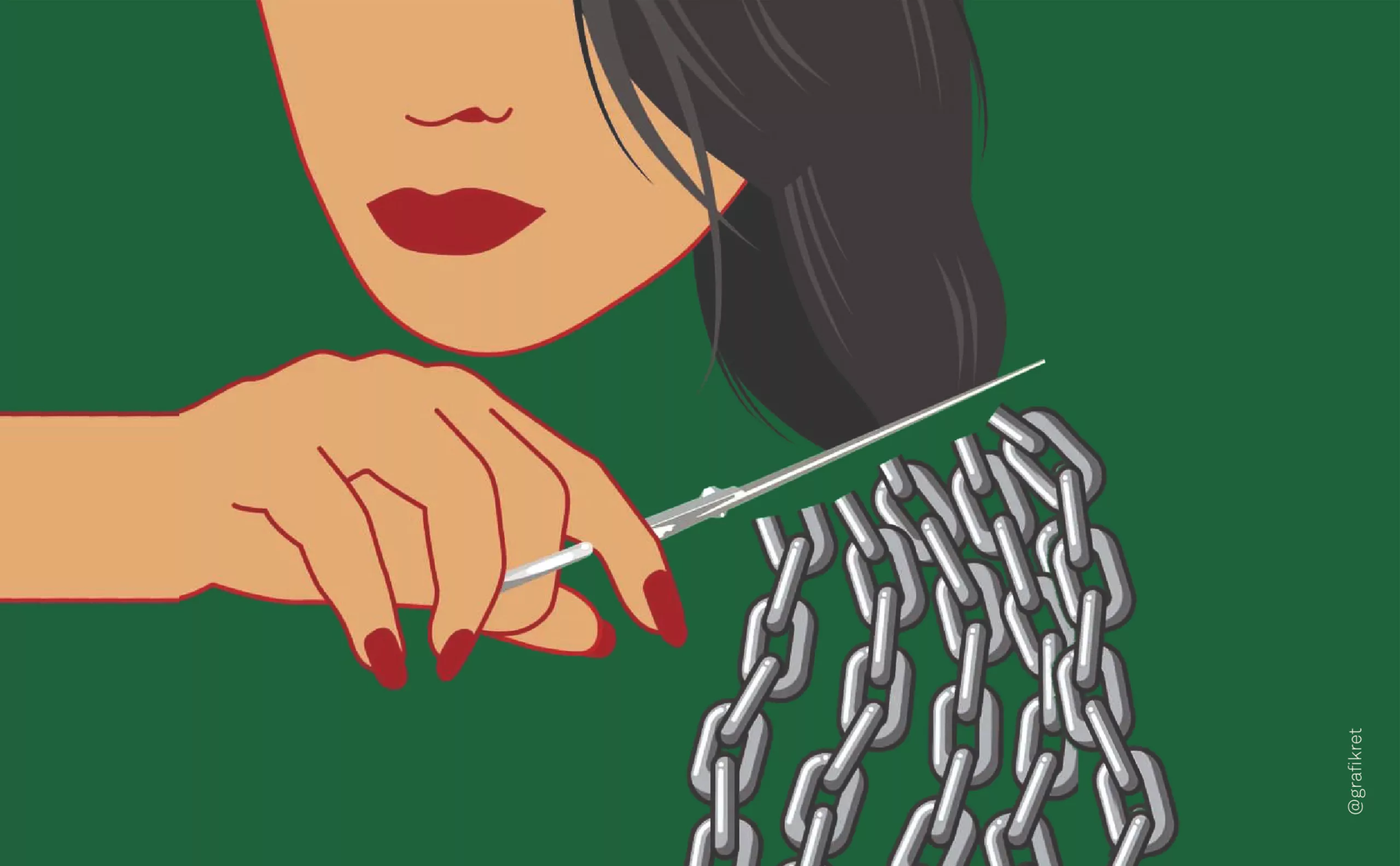Rule number 1: break taboos

Be happy, this article contains vulvas!
At the start of the 2017 school year, the clitoris is finally depicted in full, but only in one French SVT textbook, that published by Magnard. We can applaud the news, but deplore the fact that we had to wait until 2017 to depict this organ of female pleasure that looks like a wishbone – you know, that chicken bone that you break in pairs with your little finger and that’s supposed to bring good luck. In fact, it’s because of its resemblance to the female crotch (or rather, to the clitoris, now that’s out in the open) that this volatile bone has been attributed properties linked to fertility and life since ancient times. While the Etruscans used the wishbone to read oracles and make wishes, we can now wish the clitoris good fortune, and may glory finally take precedence over shame.

Because it’s worth pointing out that in 2017, according to a study conducted in February, 1 in 5 French women still don’t know where their clitoris is located. Whose fault is that? First to the religious, then to Freud, and a widespread oversight in medicine and society.
From beardless art to Freud’s omerta, via the blue rules of period protection ads and the soaring number of labioplasties, the female sex is a source of shame, mainly because it has been hidden so much, on purpose. But since 2017 it finally seems to be emerging from the shadows and gradually breaking taboos.
Let’s take a step back in time to understand the non-linear evolution of the representation of this organ and how it has been forgotten.
From glory to shame
In ancient times, women were rather lecherous, and men intellectual. It was customary for some women to show their vulvas as a joke, and for honey cakes in the shape of vulvas to be eaten in Greek palaces as a celebration of femininity. Menstrual blood was even experienced as a magical phenomenon. We have changed, right? This is partly due to the “scientific” view of the Enlightenment, which darkened the image of the female sex, making it the origin of all evil. Author Liv Strömquist explains this whole era very well in her album “L’Origine du Monde” (The Origin of the World), discussed below.
In the 16th century, Colombo (the Italian anatomist, not the inspector) first put a name to this erogenous thing: the clitoris. He refers to it as “such a pretty and useful organ”. Thumbs up for Colombo! He researched and engraved the subject, and we now know that it is linked to female pleasure. At the height of the Renaissance, around 1510, Da Vinci was also studying the question of female anatomy, as an art form. At the time, as in antiquity, it was thought that women had to come in order to procreate. As a result, it was the golden age of the clitoris.
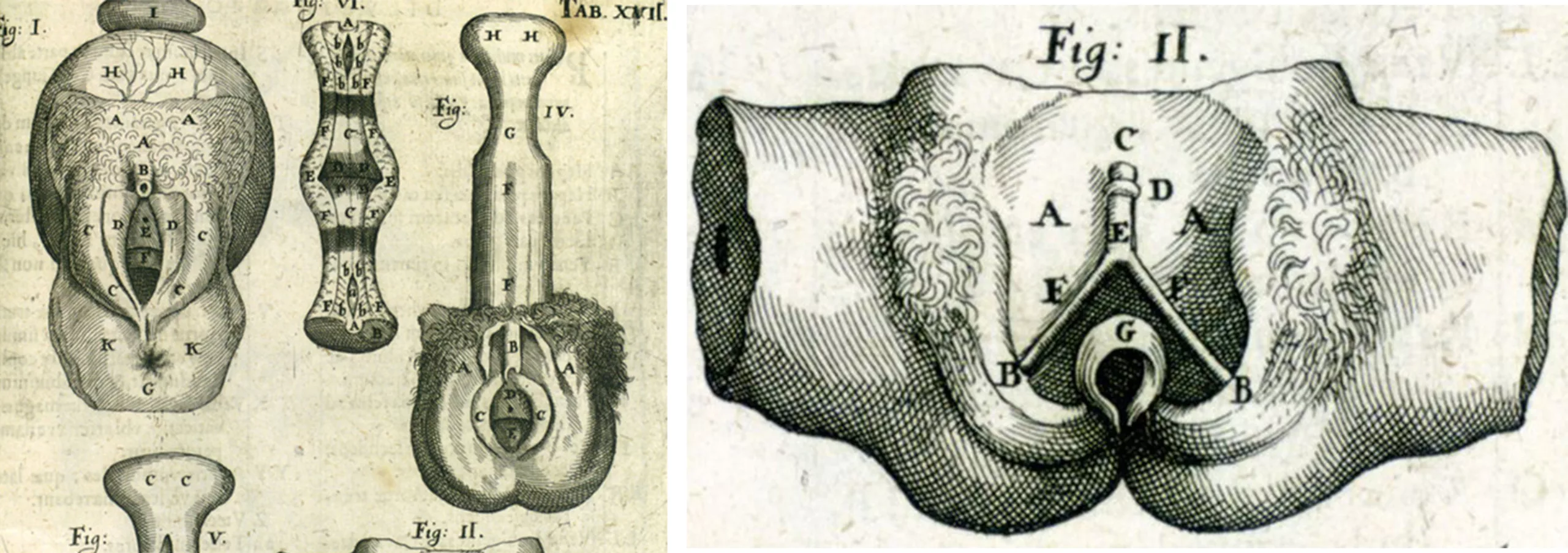
Remove this hair that I cannot see
Parallel to this, in art, pubic hair could well go to the Greeks, whose beardless marble statues set the fashion for classical artists. We now know that these statues were often coated and painted, and it’s quite possible that the Venuses of the time wore pubic fleece… In any case, this misunderstanding served as the norm for over a millennium, during which hair was (and still is) not in fashion.
Until the 19th century, the female nude was not obscene unless it was hairy. It was acceptable to depict a naked woman, provided she was a goddess. Hair was left to prostitutes and promiscuous women until 1914. Titian’s Venus of Urbino caused a scandal in 1538, as the woman was Venus in name only. Taking up the theme of Gorgione’s La Vénus endormie , but this time reclining in her bedroom with two servants at her side, she fools no one as to her true identity. This scene, probably offered as a wedding gift, does not in fact represent a goddess, but rather a faithful woman (symbolized by the little dog at her feet) who offers herself to her own pleasure and that of her husband. Nothing too dramatic.
As Paul Veyne explains in his analysis of this painting, this Venetian vision illustrates desire, but without transgression of the forbidden, a theme cherished by the Viennese and which would become Freud’s legacy, discussed below.

Masturbation for almost everyone
As early as 1750, we put the kibosh on solitary pleasure, because masturbating as a couple is good for fertility, but masturbating alone is very, very bad: onanism is accused of being a “disastrous practice”! Yes, ladies and gentlemen. It’s thought to be fatal, especially in the Protestant societies of the time, in Germany, the USA and Great Britain.
The illustrations below are taken from The Untitled Book (on a subject whose name we must not pronounce, rather like Voldemort), in which we see a “young and handsome man who gave his mother hope” vomiting blood, losing his teeth and becoming covered in pustules, before finally dying “in horrible torments”.
A great deal of creativity and energy is invested in banishing such practices, which risk losing such precious seed. Click to read the texts and see the details of the images below, it’s a real pleasure.
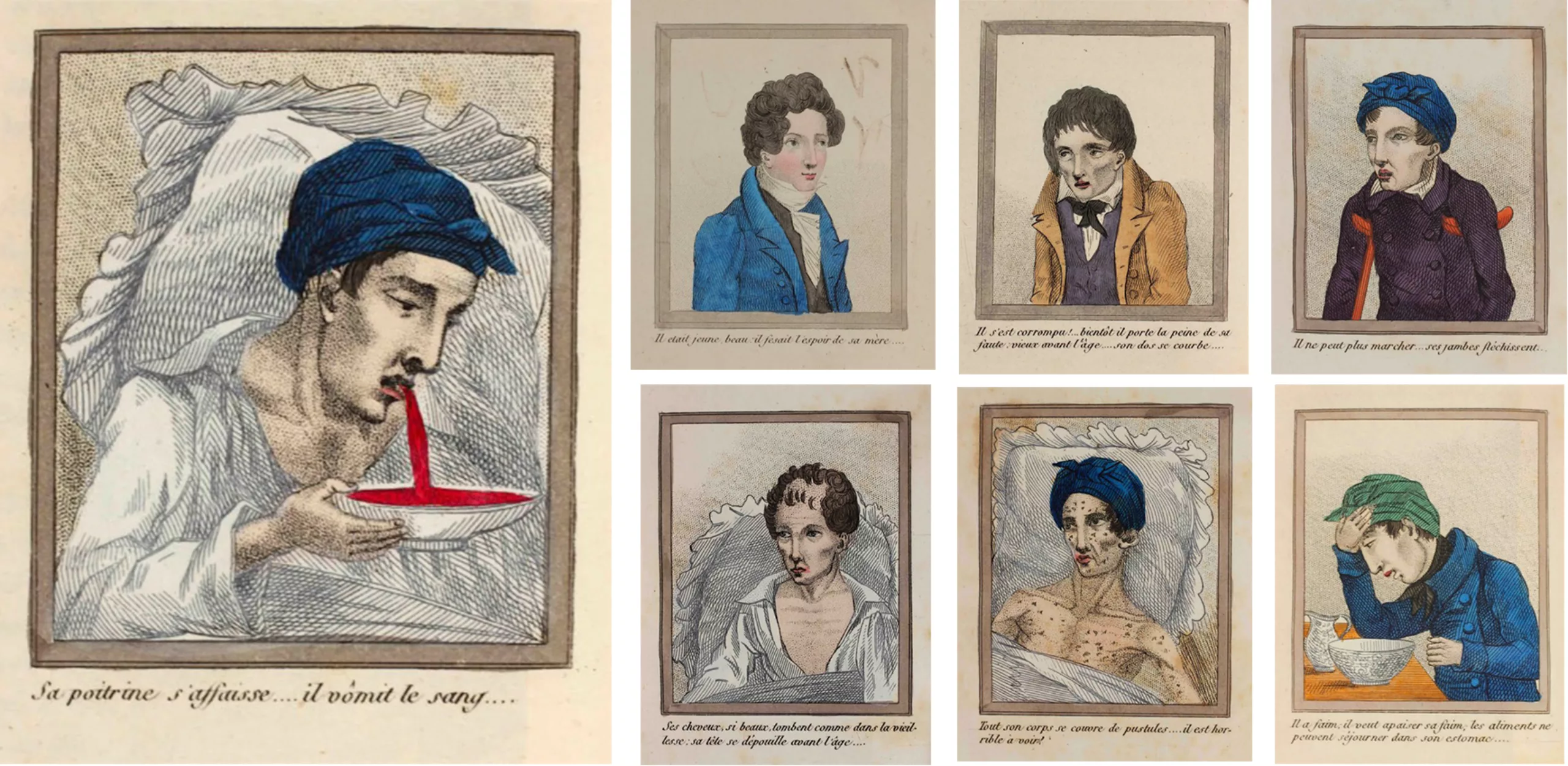
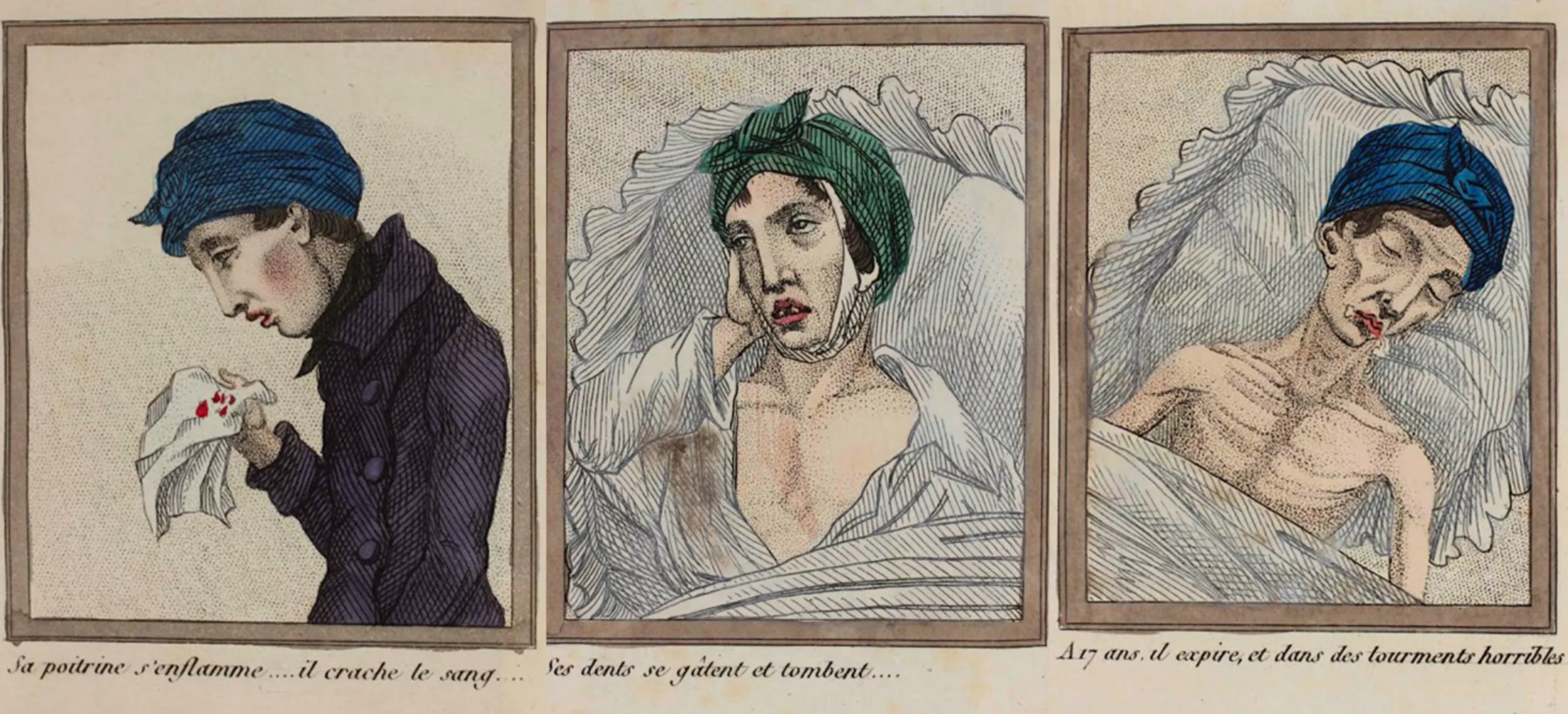
It has to be said that it is believed that the male and female seeds released during orgasm are necessary to give birth. As a couple, it was a preventive means of contraception. On the other hand, at the time, solo masturbation was synonymous with an atrocious sin, as it prevented life and ran counter to the birth rate (reminiscent of the arguments against abortion, don’t you think?) Sometimes, young women were even excised, as a punitive – or preventive – and therapeutic measure. In short, it’s a very nice time.
In 1880, it was discovered that, in fact, no, female pleasure has no reproductive function or influence on fertility: the ovum depends on a cycle, not on pleasure. To prevent young women or widows – i.e., single women – from becoming hysterical (a neurosis that was all the rage in Freud’s day, and which we now wonder was a bit of a catch-all disease), they can go to the doctor to have an orgasm. Yes, hello, it’s for a prescription!
In the same vein, our dear friend Kellogg (yes, the man behind breakfast cereals) is shouting from the rooftops that female masturbation is the cause of uterine cancer, madness (hysteria), epilepsy and a whole host of other happy ailments. And since he’s also a doctor as well as an inventor of crunchy petals, his opinion is taken into account, even when he writes that “the application of pure phenic acid to the clitoris is an excellent remedy for calming any abnormal excitement”. To which we would like to reply that the application of a revolver to the temple is an excellent remedy for headaches. But we will restrain ourselves.
What’s bred in the bone comes out in the flesh
Some twenty years earlier, in 1866, Courbet had painted his well-known “L’Origine du Monde“. Commissioned for the diplomat Khalil-Bey, the canvas wasn’t shown to the public until 1944, and didn’t cause the scandal one might have imagined, due to the obscene hairiness for the time. People still equated hair with animality, idealizing a smooth, beardless female body, as if frozen in an asexual, timeless state.
But few have noticed, as author Marc-Alain Descamps did in his book “L’invention du corps“, that “the most curious thing is that this pubic fleece, which so horrifies (humanity) because it evokes the animal, does not exist in any animal species. No one so far seems to have remarked that animals have hair everywhere, except precisely where man has it.” Animals never have “pubic, perineal, armpit or breast hair, not even a single species of monkey, even though they are the closest to man.”
And yet, until 1960 in France, publishers had to erase pubic hair to avoid censorship.
Reading Freud is bad for your clitoral health
And then dear Freud comes along with his big clogs and his Essays on Sexual Theory, published from 1905 to 1920. In them, he explains that women should only enjoy the vagina (the famous vaginal orgasm), because the clitoris is reserved for the sexuality of little girls. Women who don’t achieve orgasm through penetration are classed as frigid and need psychological help. Goodbye clitoris, hello vagina. And everyone believes it (even today!). So Freud conceives that a woman’s pleasure is only possible thanks to the intervention of a man, and not thanks to her own anatomy…
In 1930, a moral standard dictated by two clergymen was applied to American cinema, and gradually spread across the Atlantic: the Hays Code. In particular, it prohibited the appearance of naked bodies on screen. It was at this point that the word clitoris disappeared from the dictionary. Bravo, back to the 15th century! The Freudian omerta gained momentum, reaching its apogee in the 60s, when the organ, now shunned in society, was neither discussed nor studied. It even disappeared from anatomy textbooks like Gray’s Anatomy.
As a reminder, since the clitoris had the misfortune of not being useful for procreation or was mistrusted for female pleasure, medicine shunned it. It wasn’t until 1998 that Australian urologist Helen O’Connell published a study that led to the first detailed illustration of the organ. In the 2000s, Odile Buisson worked to better understand the appearance and role of the clitoris, which in 2016 would be modeled and 3D printable, this time by another Odile, Odile Fillod.
With all due respect to Freud , we now know that the clitoris is the source of orgasm, as it surrounds the vagina. Illustrator Emma has created a series of drawings to explain how the clitoris works, and to break taboos by addressing both women and men.
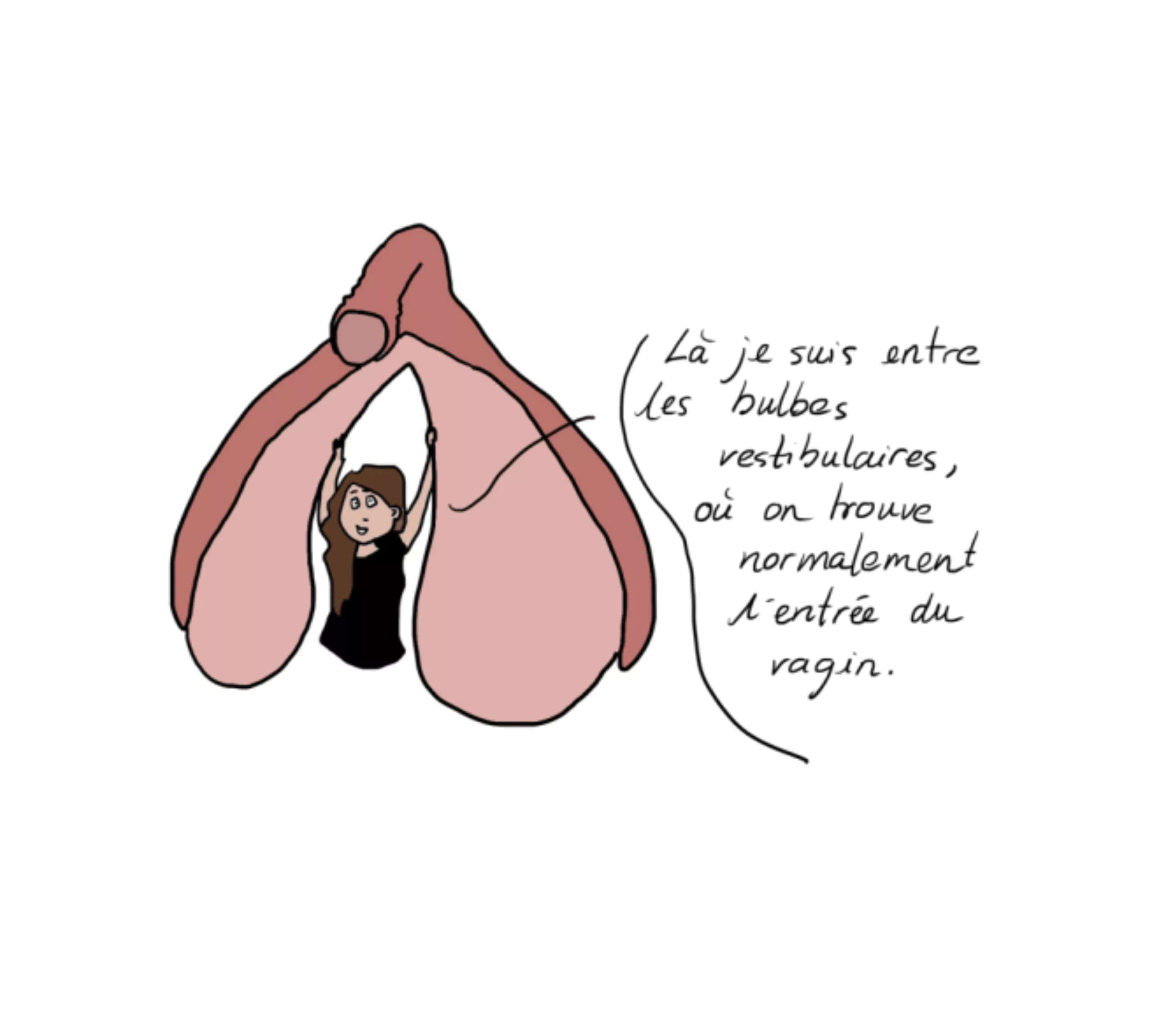
Fortunately, the desire to reveal the truth is gaining more and more followers, and we couldn’t write this article without sharing this video by Lori Malépart-Traversy, which sums up this slow evolution:
Even so, even today, the vulva or female sex is rarely represented in illustration or anatomy (just look at the image banks), and we prefer to represent a flat Barbie shape, because it’s a lot more reassuring… No hair, no slit: no sex!
The depths of vaginal art
Transgression of the forbidden
Back in the early 1900s, in Freud’s time, artists with a bit of a penchant for the subject were having a field day. At the turn of the century, Schiele was incarcerated for his erotic drawings, which he showed to minors, while Schad, Magritte and Duchamp (below) illustrated female masturbation, the violence of a man’s gaze on the female body, or fascinated voyeurism. We find the pleasure associated with transgressing the forbidden, in the legacy of dear Sigmund.
But if it’s fantasized, an outlet or a provocation, this art is still linked to the pleasure… of men. Schad’s “Two Girls” are in the middle of an act, watched by a discreet man whose watchband is the only thing visible at the top of the picture. The figure in Magritte’s “Rape” is a redhead – a symbol of temptation or impurity – and unwillingly turns us into voyeurs-rapists. As for Duchamp’s “Étant donnés“, the work can only be seen through the crack of a door peephole, like a mise en abyme of the unfathomable mysteries of the female sex.
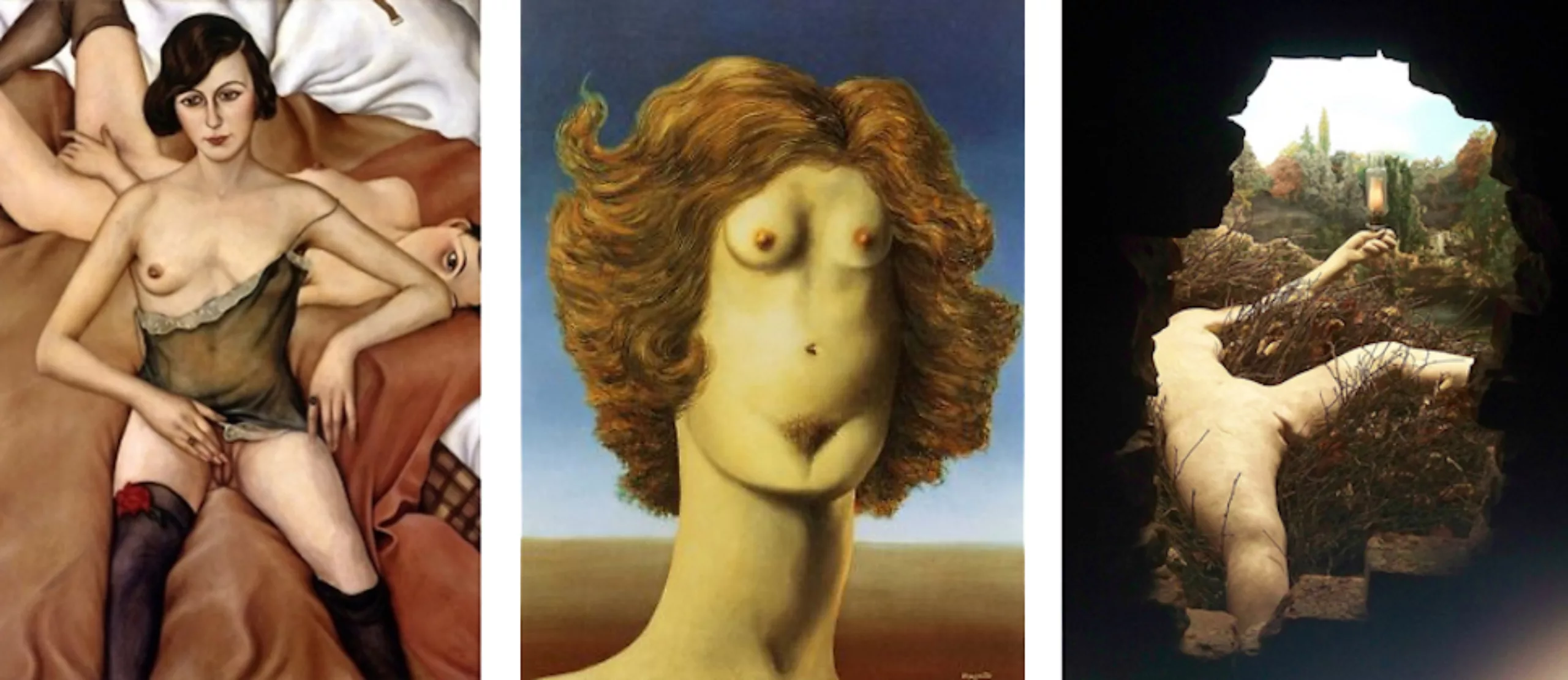
V for Vulva
Fortunately, a number of female artists are “de-eroticizing” these representations. Where men saw only sexual fascination, women glorify the body and the vulva.
In 1966, feminist artist Niki de Saint Phalle created a gigantic work, ‘Hon‘ (Elle), with her husband Jean Tinguely. This 28-metre-long reclining woman, installed in Stockholm’s Museum of Modern Art, marks a decomplexed turning point in the representation of the vagina in art. About to give birth, she invites onlookers to make the opposite movement and enter her. A bit like worshippers entering a sacred temple.
According to the artist, this work represents “a cathedral, a fair, the return to the mother, or the biggest whore in the world… I don’t know how many thousands of spectators have passed through its doors”. Inside, you’ll find fake paintings, a milk bar, a cinema… Has the vagina become a new religion?

In 1974, to spite Freud, another woman artist spent over 5 years paying tribute to female figures. Judy Chicago’s “The Dinner Party” depicts a gigantic triangular banquet at which women who have left their mark on history, from prehistory to women’s revolutions, preside. Above, 39 porcelain plates resembling the female sex are laid out, accompanied by gilded cutlery and chalices arranged on napes embroidered with the names of the 39 women.
A total of 1,038 goddesses, mythological or historical women are honored. 999 names are inscribed in gold on the tiles and accompanied by explanatory panels, to make the 39 others installed at the table shine. Those on the floor illustrate, according to the artist, “the struggle of a myriad of women to become famous or have their ideas heard – sometimes in the face of overwhelming obstacles – only for their hard-won achievements to be ultimately (like the women at the table) marginalized or erased“.


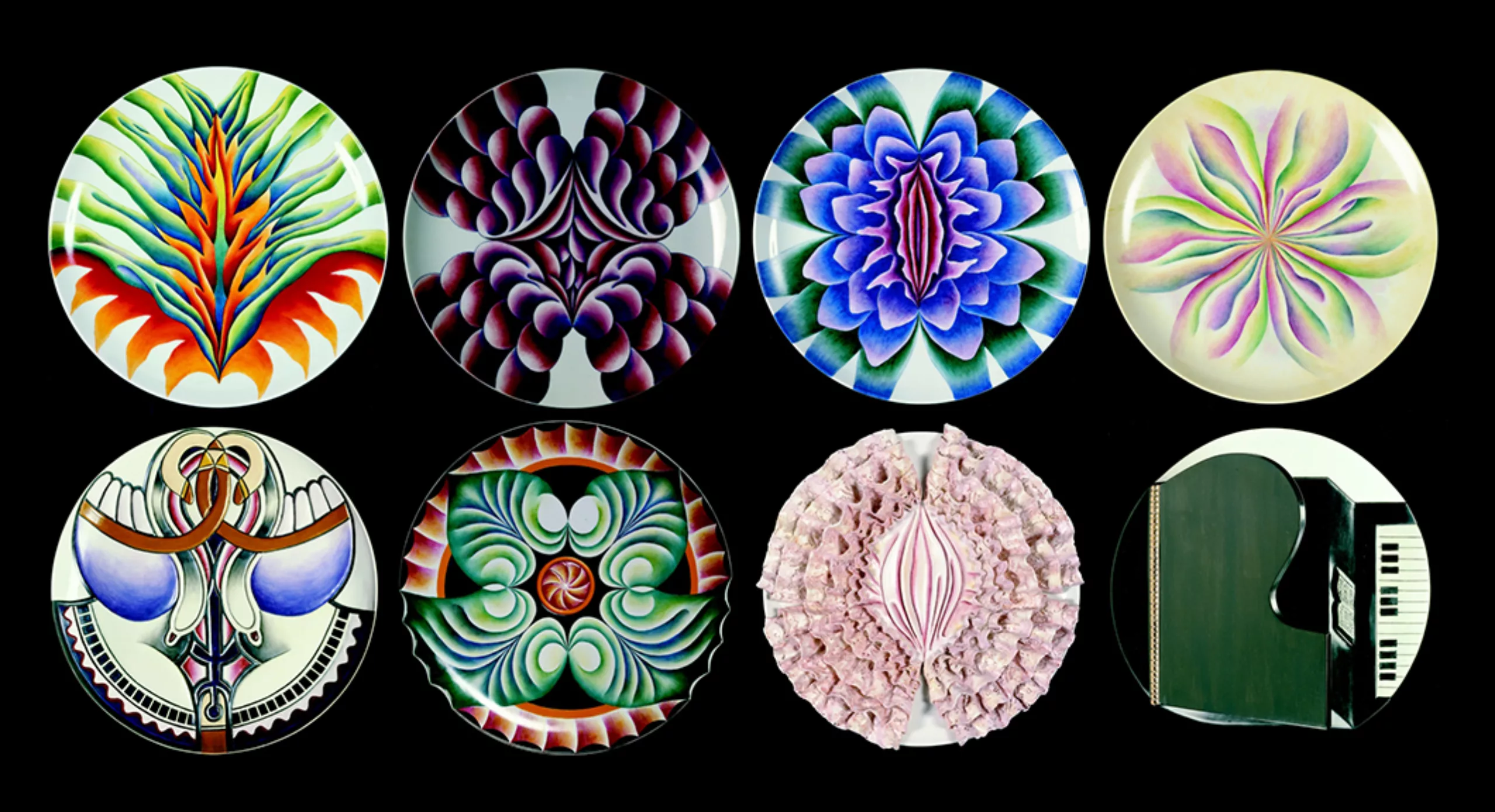
There is no shortage of ideas when it comes to representing a vulva. Fur, apricot, watermelon… comparisons are a dime a dozen to illustrate the point, as on these posters from The Vagina Monologues. But what about the real thing?

Vulval, not vulgar!
More recently, it is neither the figure of the strong woman nor that of the goddess that artists wish to highlight through their vulvar works. It’s now a pure and simple assertion of femininity, to affirm and unveil the female sex as such. The representation of the vulva is no longer a provocation, nor an opposition to the masculine; it has become a symbol of existence, to unashamedly show a sex that is finally acquitting itself of the bad image that has tarnished it for centuries. Designed above all for women to discover and better appreciate their bodies, these works are often participative.
In 2012, visual artist Jamie McCartney plastered 400 female sexes of women aged 18 to 76 (including transgenders and identical twins) to show their true face, in his “Great Wall of Vagina“. McCartney’s starting point was the observation that women, uninformed about the appearance of their private parts and influenced by pornographic standards, often have a poor image of their sex. This is sometimes such a source of complexes that more and more women and girls are resorting to surgical operations; labioplasty is the 19th most frequently performed operation in the world!
If this plaster “origin of the world” has an educational side with a hint of voyeurism, this “work of art with a social conscience” is, as the artist puts it: “not vulgar, but vulvar!”
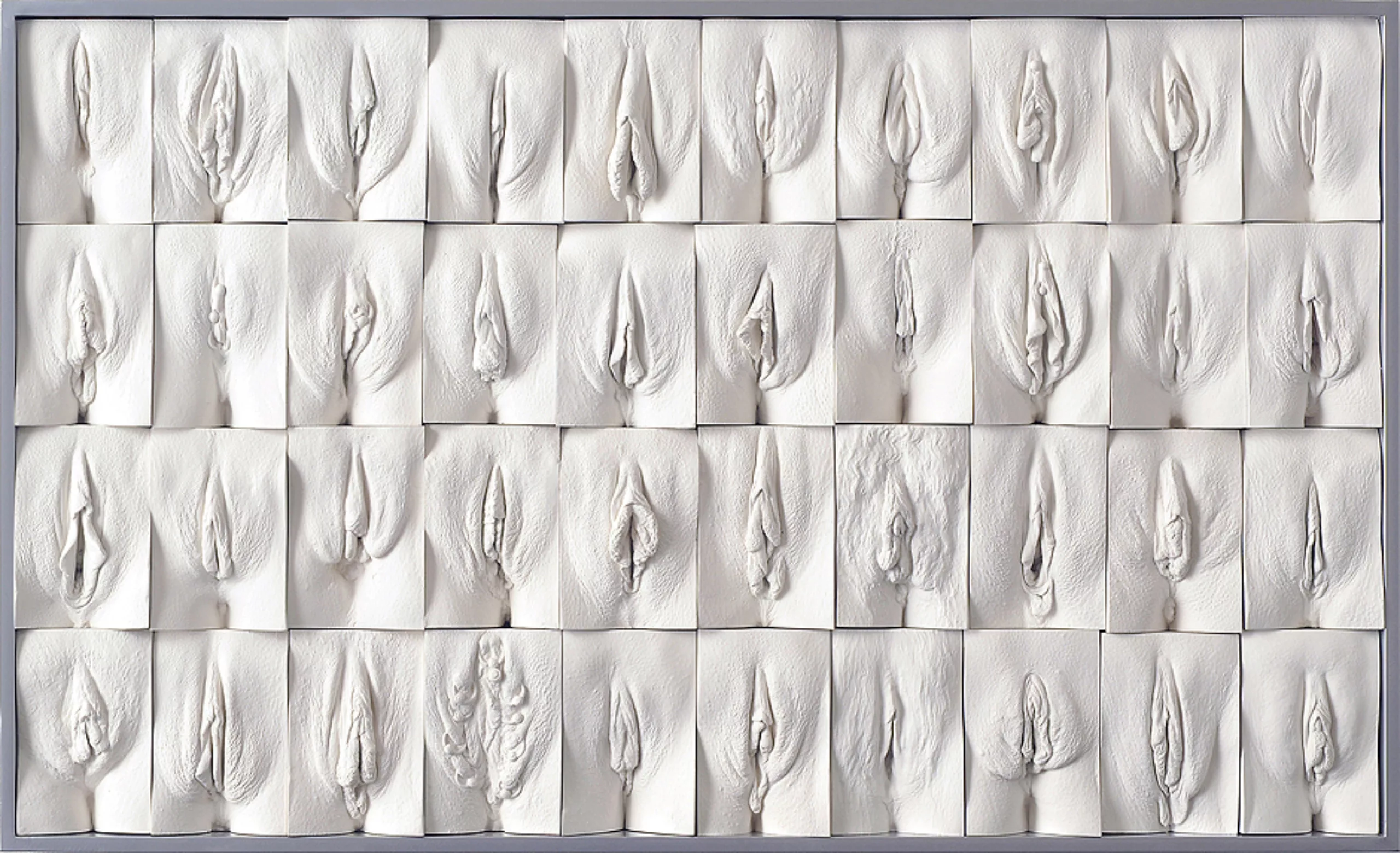
With the same educational aim, in Denmark, the association K. Vinders has created a vulva photo booth, the Kussomat, to reveal the diversity of women’s private parts. A way of lifting the veil on what lies beneath girls’ skirts.
Your clitoris will be beautiful, my girl
Such a work may seem astonishing, but it’s worth remembering that the female sex of Madam Everywoman is rarely represented, except perhaps in Courbet’s L’Origine du Monde. As a result, the media and films (mostly pornographic) act as models, and dictate their laws: full body hair removal, tiny labia minora and smooth skin are de rigueur. The vulva is standardized under the panties. Barbie is also a role model, with her non-sexuality. Just look at the anatomical illustrations and you will notice that, strangely enough, the women have nothing between their legs.
The article “The marketing of the vagina” (which should really be called “the vulva”!) clearly shows the growing diktat of certain brands that exacerbate women’s anxiety about invented problems, while providing them with the solution. This is what we call “shame marketing“. It’s common practice to make women believe that their sex is ugly, too dark, not waxed well enough, deformed, or that it smells bad. Because, yes: there are creams to lighten the vulva, or iridescent make-up to brighten up your (bottom) lips and make them shine, ladies.

So, when can we expect a fresh orchid intimate deodorant?
Menstruation sees red
Talking about the female sex is still a tricky business, but tackling the subject of menstruation is a whole new mountain to climb. A whole universe of butterflies, laughter, rainbows, blue liquid, tight white pants and sporty girls opens up before our astonished eyes! The visual language of intimate product brands aims to hide the presence of blood, and to make us believe that menstruation becomes a wonderful moment thanks to an invisible product that will act as a refreshing vacuum cleaner in panties or vaginas.
Two preconceived ideas fuel this kind of visual:
1, menstruation is a disgrace, and we shouldn’t let anyone see it or talk about it in public.
2, thanks to these magic pads, there’s no more pain or fatigue: you can finally have a good laugh.
The result is even greater embarrassment when a tampon slips out of your pocket, or when your stomach hurts and you are not pan-frying like in the ads.
But over the past 2 or 3 years, the subject has become less and less taboo. Codes are changing, and attitudes are evolving. Some brands now call a spade a spade (or a pussy a pussy) and use red liquid to symbolize menstruation, or play with different graphic codes.
To discuss the subject of menstruation, Swedish author-illustrator Liv Strömquist took over Stockholm’s Slussen station last November, with visuals from her comic strip “L’Origine du Monde” (The Origin of the World), which we absolutely recommend you read! This comic book retraces the evolution of mores around the female sex, and society’s perception of this subject. In the underground exhibition, among other idyllic pastoral images, we see women dancing with stained panties.
While some found his work provocative to the point of vandalizing certain visuals, Strömquist replied that we would get over it. A detached way of saying that it is high time we stopped being ashamed of women’s bodies, sex and menstruation.


In 2015, a brand of menstrual cup (that magical thing that revolutionizes a woman’s life) created a buzz with a vampire and… blood, of course. In October 2017, it was the English brand Libresse that caused a stir for pouring red blood for the first time in the history of advertising on a sanitary napkin. A round of applause for the soon-to-be-gone era of Smurfette blood? OB, if you are reading this…
Breaking taboos
If attitudes are changing, brands are adapting. By showing what used to be taboo, as we saw earlier, or by hijacking codes. We recently saw ads for the American brand Thinx (which develops menstrual panties) shamelessly displayed in the New York subway. With their codes drawn from the surrealist and fashion worlds, they are a far cry from the daisy fields of blue-menstruated girls laughing in their tight white pants. Thinx called on visual artist Samuel Shumway to design the paper backdrops (gif below). You could be forgiven for thinking you were looking at a trendy New York brand’s A/W 2017 fashion campaign. It almost is, except that sanitary pads are sold all year round.
Eggs, grapefruits, blood bags, the symbols are clear. The “menstruating human” (transgender woman or man, for that matter) holds her stomach, plays the ukulele and eats. The reality is visually beautiful, but realistic.
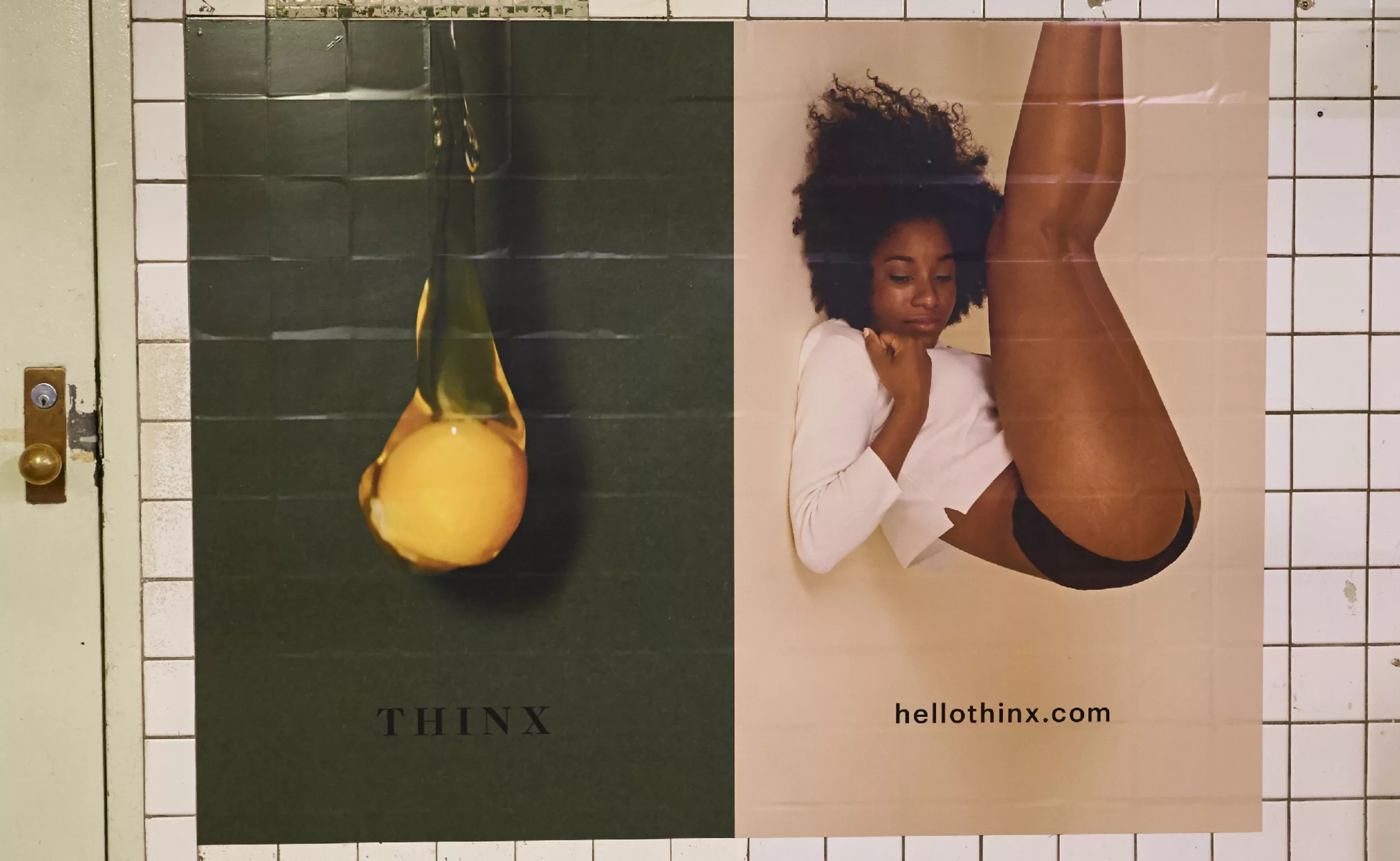

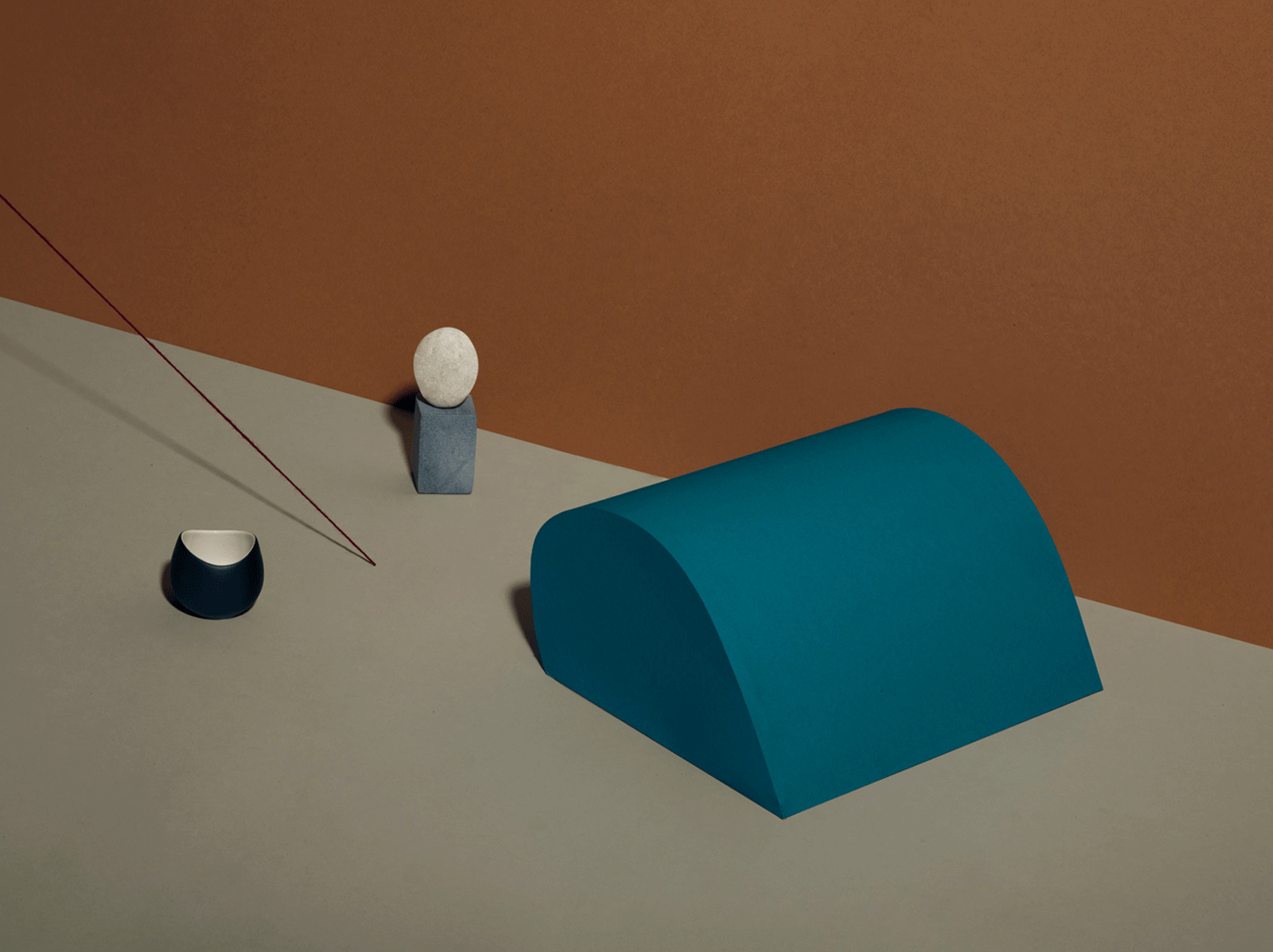

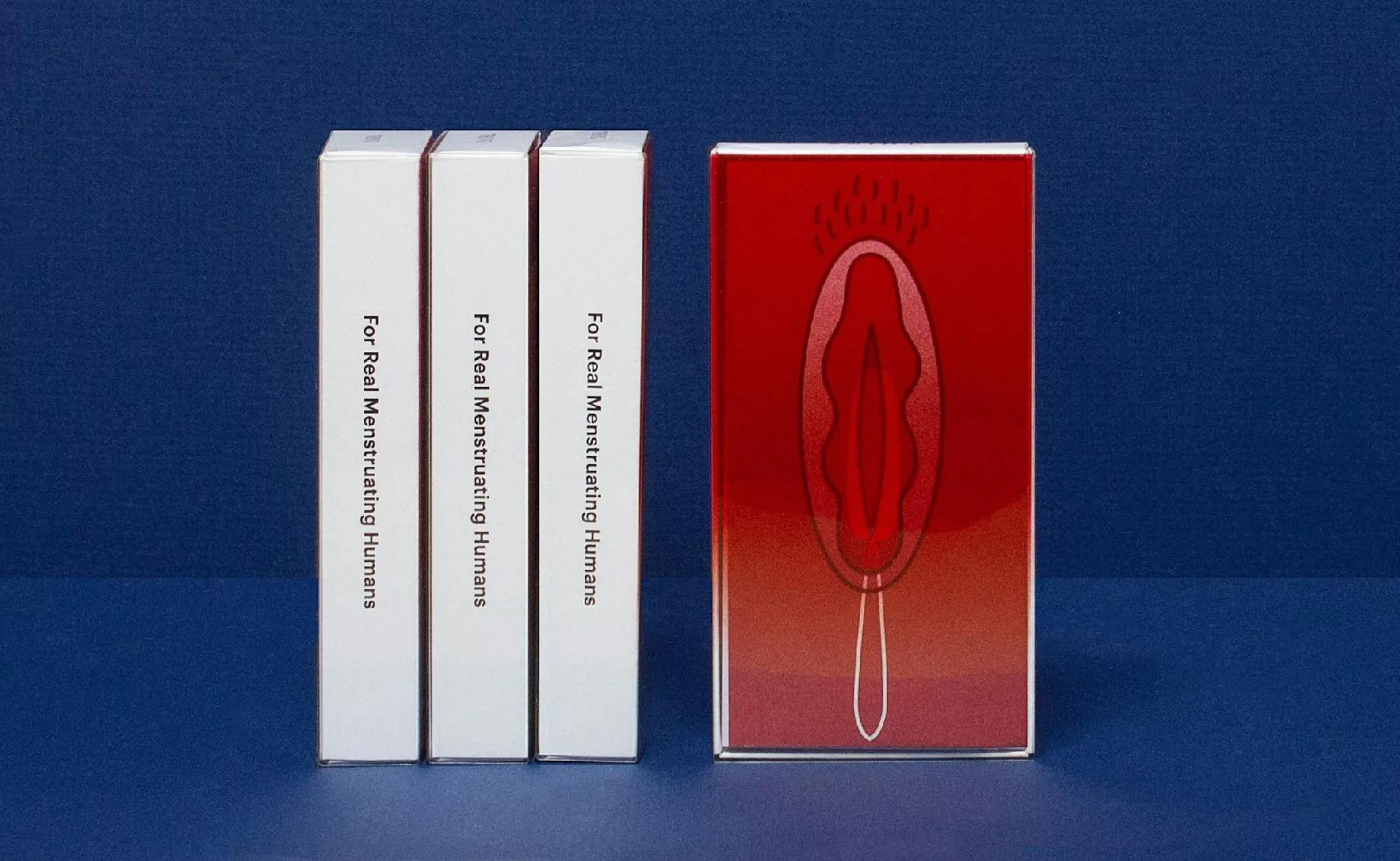
The vulva has its say
When a taboo is broken, means the end of silence! Since 2016, newspapers have regularly published special editions on the subject. Blogs and books are following suit, such as Check ta chatte by Emma, the new book Les joies d’en bas, which tackles the anatomy and particularities of the female sex from a relaxed and funny angle, the show Chattologie, which laughs at menstruation (until June 9 at the théâtre des 3 bornes in Paris), and the “Balance ta vulve” project by the Fanzine Frangine in Lyon.

Graphically, it’s liberation. Images that are neither too prudish nor too daring, often symbolizing or illustrating with humor. The Club Clitorisinstagram page features nail art, tattoos and vulva-shaped vases.
The vulva is so 2018.

It’s no coincidence that Brassens’ “Les Passantes” video begins with a series of suggestive images. Created by Charlotte Abramow and unveiled on March 8, the video already boasts over 528,000 views. As Charlotte explains on her website, “feminism is a peaceful social struggle that binds us together, not separates us“. In short, equality between men and women also means having the right to pay for your mold!

Télérama, Courrier international and L’Obs have even made front-page news on the subject, but perhaps for some it was more a case of riding the wave than really addressing the complexity of the issue.
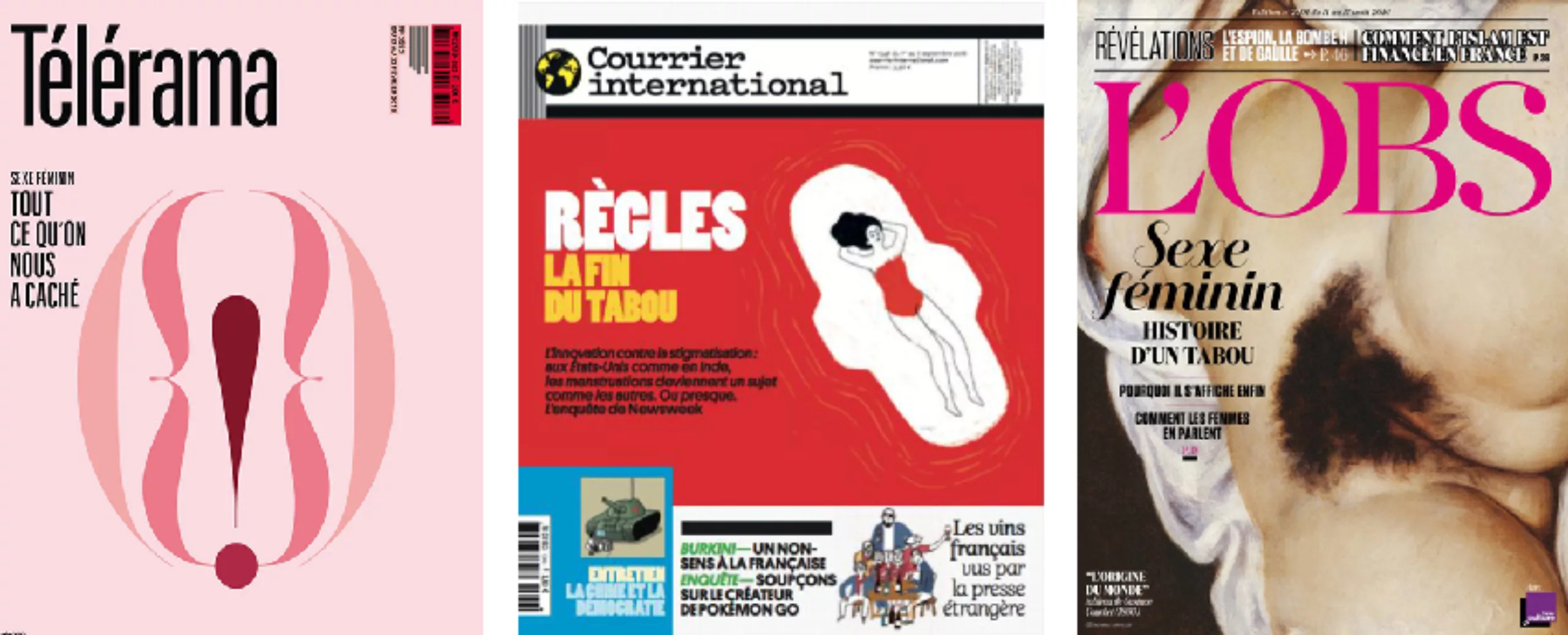
So let’s celebrate the years 201+ as those of the liberation of the vulva, the pussy, the kitty, the rigondonne, the mouflette, the bijou… while we wait for 2019 and the release of Pussypédia, we leave you with this charming song from the 60s, to listen to or watch…
( PS: for geeks, you can also listen to version 2.0 by Jeanne Cherhal).
Writing : T. Guillermou
Sources : BD – illustrations -art :
- Liv Strömquist – L’origine du monde
- Emma – Check ta chatte
- https://www.timeout.fr/paris/art/sexe-feminin-dans-lart
Articles :
- http://www.racontemoilhistoire.com/2015/04/27/clitoris-au-fil-siecles-decouverte-mauvaise-reputation/
- https://www.franceculture.fr/societe/clitoris-pourquoi-avoir-attendu-2017-pour-le-representer-dans-les-manuels-scolaires
- https://www.theguardian.com/cities/2017/nov/02/enjoy-menstruation-subway-stockholm-art-row-liv-stromquist
